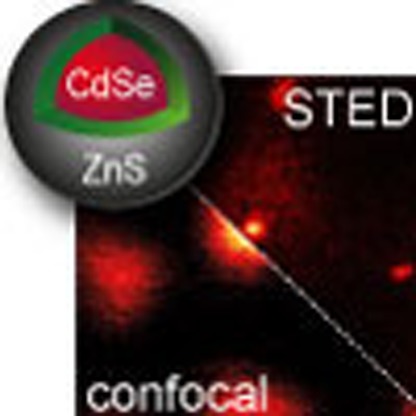- Record: found
- Abstract: found
- Article: found
STED nanoscopy with fluorescent quantum dots

Read this article at
Abstract
The widely popular class of quantum-dot molecular labels could so far not be utilized as standard fluorescent probes in STED (stimulated emission depletion) nanoscopy. This is because broad quantum-dot excitation spectra extend deeply into the spectral bands used for STED, thus compromising the transient fluorescence silencing required for attaining super-resolution. Here we report the discovery that STED nanoscopy of several red-emitting commercially available quantum dots is in fact successfully realized by the increasingly popular 775 nm STED laser light. A resolution of presently ∼50 nm is demonstrated for single quantum dots, and sub-diffraction resolution is further shown for imaging of quantum-dot-labelled vimentin filaments in fibroblasts. The high quantum-dot photostability enables repeated STED recordings with >1,000 frames. In addition, we have evidence that the tendency of quantum-dot labels to blink is largely suppressed by combined action of excitation and STED beams. Quantum-dot STED significantly expands the realm of application of STED nanoscopy, and, given the high stability of these probes, holds promise for extended time-lapse imaging.
Abstract
 STED nanoscopy enables sub-diffraction imaging with a wide range of fluorescent probes.
Here, the authors show that a bright and very photostable class of fluorescent quantum
dots can be super-resolved with STED as biolabels in cellular contexts.
STED nanoscopy enables sub-diffraction imaging with a wide range of fluorescent probes.
Here, the authors show that a bright and very photostable class of fluorescent quantum
dots can be super-resolved with STED as biolabels in cellular contexts.
Related collections
Most cited references13
- Record: found
- Abstract: found
- Article: not found
Quantum dot bioconjugates for ultrasensitive nonisotopic detection.
- Record: found
- Abstract: found
- Article: not found